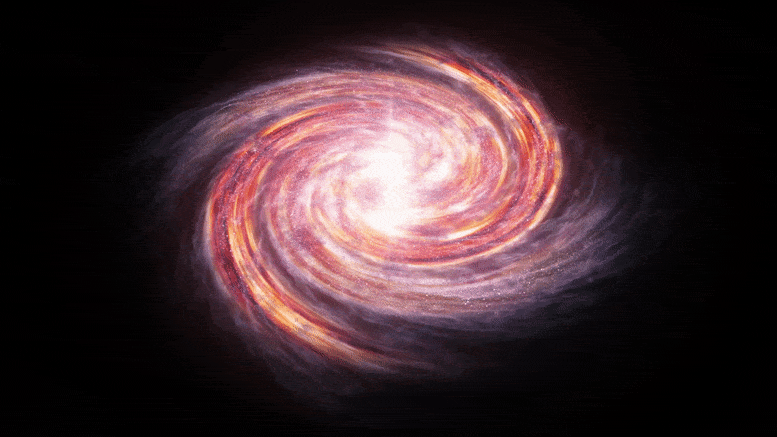Astronomers Spot ‘Cannonball Pulsar’ Hurtling Through Space – Geek
Astronomers discovered a “cannonball pulsar” speeding through space at almost 2.5 million miles per hour using the National Science Foundation’s Karl G. Jansky Very Large Array (VLA) and NASA’s Fermi Gamma-ray Space Telescope.
According to a NASA press release, pulsars are superdense, spinning neutron stars that are left behind when a giant star explodes. This pulsar, which is called PSR J0002+6216 (J0002 for short), has a radio-emitting tail that’s pointing directly at expanding debris from a recent supernova blast.
“Thanks to its narrow dart-like tail and a fortuitous viewing angle, we can trace this pulsar straight back to its birthplace,” Frank Schinzel, a National Radio Astronomy Observatory (NRAO) scientist, said in a NASA Fermi Space Telescope blog post. “Further study of this object will help us better understand how these explosions are able to ‘kick’ neutron stars to such high speed.”
J0002, which is located roughly 6,500 light-years away in the constellation Cassiopeia, was found in 2017 by Einstein@Home, a citizen-science project that uses idle time on volunteers’ computers to process Fermi gamma-ray data. This pulsar spins 8.7 times of second and generates a pulse of gamma rays with each of its rotations.

An artist’s pulsar concept. (Photo Credit: NASA/JPL-Caltech)
J0002 is about 53 light-years from the center of supernova remnant CTB 1. Its fast motion through interstellar gas causes shock waves that produce the magnetic energy tail and accelerated particles. The magnetic energy tail extends 13 light-years and points back to CTB 1’s center.
Thanks to a technique called pulsar timing and Fermi data, the team measured the time and direction the pulsar was moving across our line of sight. J0002 is hurtling through space five times faster than the average pulsar and faster than 99 percent of pulsars with measured speeds. It’s expected to eventually escape our galaxy down the line.
The team plans to conduct additional observations using NASA’s Chandra X-ray Observatory and the National Science Foundation’s Very Long Baseline Array (VLBA).
More on Geek.com:






